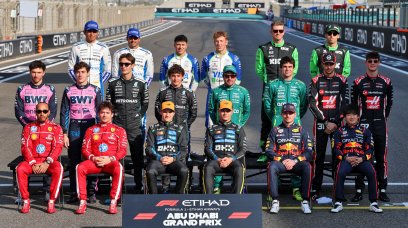Toto Wolff has shed some light on the approach he takes to extracting the best possible performances from himself and members of his team. The Mercedes team boss gave an extensive interview to LinkedIn's Daniel Roth for the This Is Working series, in which he was asked about how he keeps his enemies "close" as a reminder that they are human. It is an element that can be easy to forget in the face of intense competition, represented by the most high-end Formula 1 machinery created by some of the world's most determined, well-resourced and intelligent automotive engineers. Wolff revealed that he employs a special tactic - one which he has encouraged at a root-and-branch level at Mercedes - to print off a picture of a rival team's counterpart to keep on his desk.
Keeping pictures of his "enemies" nearby
An example of this, for Wolff, would perhaps be keeping an image of Red Bull team boss Christian Horner on his desk. But does he actually have a framed photo of Horner looking at him throughout his working day? "That's the theory of some psychologists, the sports psychologists that say a sustainable performance needs to come within you," Wolff said. "I think this is like the ultimate goal, but it is quite easy to work with enemy building: when you know who your opposite person in a team is in the other company and you visualise that – you have even the picture printed out on your desk or in your notebook [and] you look at that person permanently. "When you struggle a little bit, when you seem overworked or you're thinking about other stuff, you see that person – you're looking into their eyes and you're saying to yourself, 'What is she or he doing at the moment? What do I need to do in order to outperform that person?' "I can tell you, on my notebook, I have three windows that are always open and I click on these windows and there are three faces." Wolff would not reveal the identity of these people, though suggests that they are not involved in Formula 1. "Every time I look into these faces - and they're outside of the industry, by the way, but I'm not going to tell you who that is - it just keeps me going. It pushes me further," he added.
What other tactics did Wolff reveal?
Having encouraged his entire team to find their counterparts and employ a similar tactic, Wolff also said that a key component of extracting the best possible performance from his staff is to recognise their own individual methods of delivering such a performance – rather than trying to apply a blanket 'one size fits all' approach. "Extracting high-performance as an entity, whether it's a sports team or a company, is not always about working 80-hours a week and being under constant pressure," he explained. "It also means that you need to be able to depressurise, to energise yourself and be motivated. Balancing those sides is crucially important. "Finding out what drives people – and it's not always things like money or power. It might be internal or external recognition, having more time with the family, being able to spend time on your hobby, or the social interactions in the team. "It's not one-dimensional. We are complex personalities. All of us are different, contrary to what leaders normally assume, 'Everybody thinks like me'. And that is what keeps me curious. "And also, it's not a static situation. We may have times during the season where it's very intense, where people are borderline burning out. But we're trying to anticipate that and make sure that this comes in cycles and people are actually able to regenerate. "Now, I'm saying that as if it would be a home run. It is not. We are under strain, but we are trying to smooth that out as good as possible, because it's gaining a performance advantage."
Most read







